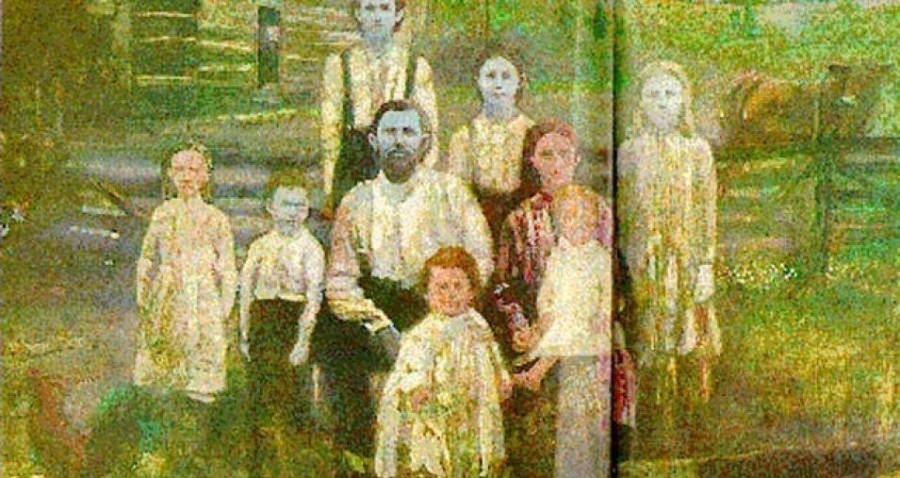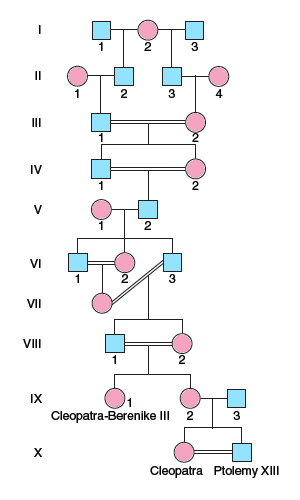Chapter 9. Pedigree Analysis

Fugates of Kentucky: Skin Bluer than Lake Louise
By SUSAN DONALDSON JAMES | Good Morning America
The reposting of the article adheres to the Fair Use application of 17 U.S. Code § 107.
Benjamin “Benjy” Stacy so frightened maternity doctors with the color of his skin — “as Blue as Lake Louise” — that he was rushed just hours after his birth in 1975 to University of Kentucky Medical Center. As a transfusion was being readied, the baby’s grandmother suggested to doctors that he looked like the “blue Fugates of Troublesome Creek.” Relatives described the boy’s great-grandmother Luna Fugate as “blue all over,” and “the bluest woman I ever saw.”
In an unusual story that involves both genetics and geography, an entire family from isolated Appalachia was tinged blue. Their ancestral line began six generations earlier with a French orphan, Martin Fugate, who settled in Eastern Kentucky. Doctors don’t see much of the rare blood disorder today, because mountain people have dispersed and the family gene pool is much more diverse. But the Fugates’ story still offers a window into a medical mystery that was solved through modern genetics and the sleuth-like energy of Dr. Madison Cawein III, a hematologist at the University of Kentucky’s Lexington Medical Clinic.
Cawein died in 1985, but his family charts and blood samples led to a sharper understanding of the recessive diseases that only surface if both parents carry a defective gene. The most detailed account, “Blue People of Troublesome Creek,” was published in 1982 by the University of Indiana’s Cathy Trost, who described Benjy’s skin as “almost purple.”
The Fugate progeny had a genetic condition called methemoglobinemia, which was passed down through a recessive gene and blossomed through intermarriage. “It’s a fascinating story,” said Dr. Ayalew Tefferi, a hematologist from Minnesota’s Mayo Clinic. “It also exemplifies the intersection between disease and society, and the danger of misinformation and stigmatization.”
Methemoglobinemia is a blood disorder in which an abnormal amount of methemoglobin — a form of hemoglobin — is produced, according to the National Institutes for Health. Hemoglobin is responsible for distributing oxygen to the body and without oxygen, the heart, brain and muscles can die. In methemoglobinemia, the hemoglobin is unable to carry oxygen and italso makes it difficult for unaffected hemoglobin to release oxygen effectively to body tissues. Patients’ lips are purple, the skin looks blue and the blood is “chocolate colored” because it is not oxygenated, according to Tefferi. “You almost never see a patient with it today,” he said. “It’s a disease that one learns about in medical school and it is infrequent enough to be on every exam in hematology.”
The disorder can be inherited, as was the case with the Fugate family, or caused by exposure to certain drugs and chemicals such as anesthetic drugs like benzocaine and xylocaine. The carcinogen benzene and nitrites used as meat additives can also be culprits, as well as certain antibiotics, including dapsone and chloroquine.
The genetic form of methemoglobinemia is caused by one of several genetic defects, according to Tefferi. The Fugates probably had a deficiency in the enzyme called cytochrome-b5 methemoglobin reductase, which is responsible for recessive congenital methemoglobinemia. Normally, people have less than about 1 percent of methemoglobin, a type of hemoglobin that is altered by being oxidized so is useless in carrying oxygen in the blood. When those levels rise to greater than 20 percent, heart abnormalities and seizures and even death can occur. But at levels of between 10 and 20 percent a person can develop blue skin without any other symptoms. Most of blue Fugates never suffered any health effects and lived into their 80s and 90s. “If you are between 1 percent and 10 percent, no one knows you have an abnormal level and this might be the case in a lot of unsuspecting patients,” he said. Many other recessive gene diseases, such as sickle cell anemia, Tay Sachs and cystic fibrosis can be lethal, he said. “If I carry a bad recessive gene with a rare abnormality and married, the child probably wouldn’t be sick, because it’s very rare to meet another person with the [same] bad gene and the most frequent cause therefore is in-breeding,” Tefferi said. Such was the case with the Fugates.
Martin Fugate came to Troublesome Creek from France in 1820 and family folklore says he was blue. He married Elizabeth Smith, who also carried the recessive gene. Of their seven children, four were reported to be blue. There were no railroads and few roads outside the region, so the community remained small and isolated. The Fugates married other Fugate cousins and families who lived nearby, with names like Combs, Smith, Ritchie and Stacy. Benjy’s father, Alva Stacy showed Trost his family tree and remarked, “If you’ll notice — I’m kin to myself,” according to Trost. One of Martin and Elizabeth Fugate’s blue boys, Zachariah, married his mother’s sister. One of their sons, Levy, married a Ritchie girl and had eight children, one of them Luna. Luna married John E. Stacy and they had 13 children.
Pedigrees: Family Trees
A pedigree is used to trace inheritance of a trait over several generations
Three primary patterns of inheritance:
1. Autosomal dominant
2. Autosomal recessive
3. Sex-linked (X-chromosomal)
Other patterns of inheritance: Y-linked genes, mitochondrial genes.
Pedigree analysis
In pedigrees, squares symbolize males and circles represent females. Two parents are joined by a horizontal line, with offspring listed below in their order of birth, from left to right. Shaded symbols stand for individuals with trait being traced.

Autosomal dominant trait pedigree
Dominant: Affected individuals can appear in every generation.
Autosomal: Gene is on one of the autosomes. Male and female offspring equally likely to inherit trait.
The trait doesn’t appear in the descendants of two unaffected parents.
A trait that appears in successive generations is normally due to a dominant allele.
Autosomal recessive trait pedigree
Recessive: If neither parent has the characteristic phenotype (disease) displayed by the child, the trait is likely to be recessive.
Matings between an affected and an unaffected parent will usually yield all unaffected offspring (unless the unaffected parent is heterozygous for the trait).
Autosomal: Male and female offspring equally likely to inherit trait.
Note: Parents of affected children in pedigree shown are first cousins.
Sex-linked trait pedigrees
Male to male transmission rules out X-linkage.
X-linked recessive: The trait is preferentially seen in males, who are hemizygous. Females are heterozygous “carriers.”
Affected fathers and homozygous “wild type” mothers produce only unaffected sons and carrier daughters.
100% of daughters of affected males are carriers; none of their sons are affected.
Occasionally, a carrier female expresses some characteristics of an X-linked trait due to mosaicism.
Most X-linked traits are recessive.
100% of daughters of affected males are affected, none of their sons.
Another example of consanguinity: the Ptolemy dynasty of Egypt

Key Takeaways
- The inheritance of rare human traits can be tracked through genetic genealogies called pedigrees.
- Trait inheritance can be surmised using the pattern of inheritance, which has specific characteristics depending on whether the trait is dominant or recessive and whether it is located on autosomes or sex chromosomes.
